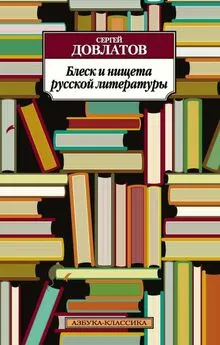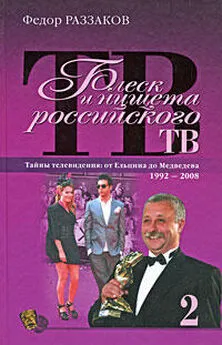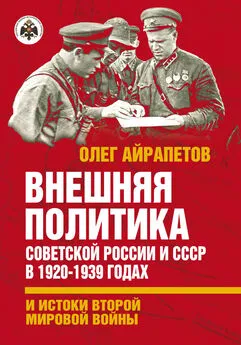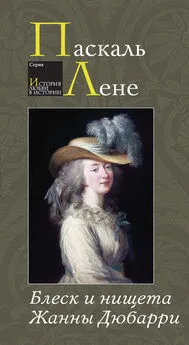Елена Юрова - Блеск и нищета бижутерии. Повседневные украшения в России и СССР, 1880–1980 годы
- Название:Блеск и нищета бижутерии. Повседневные украшения в России и СССР, 1880–1980 годы
- Автор:
- Жанр:
- Издательство:Литагент Этерна
- Год:2016
- Город:978-5-480-00218-8
- ISBN:978-5-480-00218-8
- Рейтинг:
- Избранное:Добавить в избранное
-
Отзывы:
-
Ваша оценка:
Елена Юрова - Блеск и нищета бижутерии. Повседневные украшения в России и СССР, 1880–1980 годы краткое содержание
Для широкого круга читателей, всех тех, кто интересуется историей прикладного искусства и моды.
Блеск и нищета бижутерии. Повседневные украшения в России и СССР, 1880–1980 годы - читать онлайн бесплатно ознакомительный отрывок
Интервал:
Закладка:
Soviet girls also often wore a rosary as a necklace. They were atheist and paid no attention to their religious meaning. For the transformation of a rosary into beads it was enough to remove a cross (ill. 72). As a typical example of such an attitude to the rosary can serve two embroideries made from the same pattern: one 1830s another 1950s. Between them there is only one difference – the lack of a cross on the later one (ill. 71,71a).
At that time the production of inexpensive jewelry in USA flourished (ill. 73–75). Many companies produced costume jewelry, the leading designers on both sides of the Atlantic were competing in the development of new fashions in this field.
At the same time in Soviet Union the fight for the look of the new woman proceeded. In the photos in the women’s magazines it was impossible to find even the most modest jewelry. In the early 1930s, the Great Terror gradually began, and many women for whatever reason, were sent to concentration camps. Even there they were trying to find a way to adorn themselves. In many recollections how prisoners made beads of black bread is described. This technique turned out to be very popular and was used even much later until 1960s (ill. 123).
On June 22,1941, Nazi Germany attacked the USSR. With the date a story of simple plastic beads is connected. One of our neighbors told me that on this day her father, who was a well-known scientist went as usual to work, but suddenly returned home. When his wife asked him, what was the matter, he answered: “To kiss you”. It was the last time that she saw him. He was arrested straight at work and died in prison. Since this day she wore only these black beads (ill. 78).
Needless to say, during the war the Soviet women had no time for jewelry. They fought at the front, worked at defense plants, or died of hunger in blockaded Leningrad. There was no sign of jewelry on the photos in the remaining women’s magazines. Only once in a caricature in “Crocodile” (№ 25, 1945) one could see beads on the neck of Goebbels’ secretary.
Despite all the difficulties of wartime the desire of girls to look attractive was ineradicable. This can be proved in a photo of a young peasant girl, made in the midst of war (1943) (ill. 79). Most probably, she took this attire from her mother’s dower chest to make the photo and send it to her friend.
Closer to the end of war parcels with foreign dresses and jewelry began to come to Russia more and more often. Furthermore in shops jewelry appeared made of bohemian garnets (ill. 80). For the first time Russian women had the opportunity to get something fashionable. Most in demand by them were short beads and brooches with transparent stones (ill. 83). No less fashionable were also necklaces of opaque white glass and braided strands of beads (ill. 84-85b).
After the war the Baltic States were joined on to USSR. There for a short time one could buy some foreign bijoux in the flea markets. So black wooden beads with flowers and plastic chain were bought in 1946-47 in the flea market in Riga (ill. 86-86a). Somewhat later our women began to bring national brooches – “sacta”, from Latvian resorts (ill. 86, 86a). In Kaliningrad (former Koenigsberg) amber factories began to work (ill. 87–88). Along with its mass production there were artisans, who made amber brooches with carved inside insects, lizards and even ships (ill. 88a).
At the factory in Kostino and in many small workshops the production of glass beads began again (ill. 89). Brooches in the form of spiders, butterflies, or baskets still remained extremely popular (ill. 90). But it was very difficult to buy such “valuables” and the majority had to be satisfied with primitive glass brooches (ill. 93a).
The attitude of the authorities to jewelry still remained negative, but became less aggressive. In the caricatures in “Crocodile” can be found a clear distinction between positive and negative persons. The moral degradation of the secretary, whose boss is advancing in employment, is followed by emergence of more and more jewelry (ill. 92). The employee who is constantly late for work wears not only a brooch, but also beads (ill. 93).
As always pearl necklaces remained the most popular (ill. 100,100a). There is a touching story about a former soldier and a young girl, who survived the blockade of Leningrad but completely lost her hair. They were a very affectionate couple, and once he bought her a pearl necklace. At that time the dresses of black velvet were in fashion. The wife had no such dress and decided to try the necklace on her black cat. The cat with the necklace ran away. Later it returned, but evidently without beads. She had fear that the husband will kill the cat, but he simply bought her another similar necklace. She wore it until her death, and the husband put it into her coffin.
In early 1960s after Stalin’s death in USSR foreign jewelry appeared for the first time. In Moscow several exhibitions of Czech glass took place (ill. 95). And after so many years of jewelry starvation our women saw the splendid examples of Czech beads, earrings, bracelets etc. Soon they appeared also in the shops. Elderly ladies liked imitations of garnets and transparent faceted beads (ill. 95). Young girls preferred so called “ fruit salad” beads and braids of beads (ill. 97–99). Imports from China and DDR also began (ill. 102,103).
By the end of the 1950s multi-strand beads became extremely fashionable (ill. 104–107). One fashion magazine even recommended to wear them with your overcoat. Wooden necklaces were also very popular (ill. 109). Soon the wooden beads began to be made in local workshops. The necklaces from Manchurian walnut – real wooden lace, were especially desired (outer necklace on N1.109). Bone carving workshops gradually returned to work in Kholmogory, as well as Rostov enamel masters, and factories making jewelry of semiprecious stones in the Urals (ill. 110–112).
Most wore the production of domestic factories and workshops or Czech jewelry, but at that time there was a group of youth named “styljagy” focused entirely on the western fashion. Their style of clothes and jewelry was exaggeratedly fashionable, and their appearance sharply stood out from the crowd. The authorities conducted an uncompromising struggle with them, and the magazine “Crocodile” constantly published caricatures deriding them (ill. 103). Girls who did not want to or could not work, were also depicted hung with beads and earrings (ill. 104,105). The enemies of the proletariat were also not forgotten: lady Astor in the caricature depicting American capitalism wears both beads, earrings and bracelets (ill. 106).
The US market was indeed overcrowded with costume jewelry, distinguished by the abundance of shiny stones and bright gilding. The only kind of jewelry that disappeared from the US market for a long time was a Czech jewelry. Practically the whole production of Jablonex was exported to USSR. The designs of Czech jewelry didn’t change so strongly over the years. That’s why quite similar brooches often are dated differently: here (1960-70s) and in USA (1920-30s) (ill. 119,119a).
Czech jewelry and the very traditional production of our factories couldn’t satisfy completely the demand of Russian women, who were deprived for a long time of any jewelry. So they started to make it themselves of paper, various seeds, nuts, alder cones, birch bark (ill. 120). Some skilled craftsmen created for their favorite girls whole sets of jewelry (ill. 121, 121a). The method of making beads of bread was also not forgotten (ill. 123).
In the early 1960s long necklaces became extremely fashionable, especially those composed of separate beads connected by chains (ill. 123a-125). The Kaliningrad Amber Factory and Lithuanian masters also decidedly modernised the style of their products (ill. 126,127). Their buyers found plastic beads of fake amber as well (ill. 128).
Brooches with so called “abstract” designs enjoyed exceptional popularity. Brooches, unreleased by Tallinn jewelry factory (label “T30-33 Met”) were very interesting. In the State Art Institute of the Estonian SSR in 1966-68s series of stamped metal brooches were created with ethnographic motifs. Usually they have a brand «Tallin KJ». Similar in style brooches were produced also in Latvia (ill. 129).
In early 1960s the Leningrad jewelry factory (label «ЛФ») and the Leningrad jewelry- watch plant (label «ЛЮ») began to produce brooches in so called “abstract” style by the method of hot enamel (ill. 130–132). The figure after the brand designates the year of production. For example, «ЛФ0» indicates that the brooch was made in 1960. The letter “M” designates that it was made of base metal. Designers of these brooches were young graduates of art school. The Leading role among them played Vera G. Povolotskaya, whose works are now in many museums in Russia. From my point of view, they are no less interesting than, for example, the well-known brooches of French artist Lee Stein, who began to work in late 1960s (ill.133-133b). Many factories made similar brooches using simpler technologies and cheaper materials (ill. 134). The same factories produced a large number of childrens brooches, which were extremely popular at that time (ill. 134a).
The masters working with semiprecious stones also passed to the new style of design (ill. 135). Nevertheless there was not enough jewelry, and many women longed for something rare, peculiar, or unusual. There were many goldsmiths, but at that time private persons were strictly forbidden to work with precious stones and materials. So such masters took a big risk, but their clients did not betray them. At least two of these masters worked very skillfully: one was a brilliant jeweler (ill. 136, 137), the second – a proficient carver (ill. 138, 139).
In 1970s the folk style became very fashionable (ill. 142, 142a). For a long colorful gown large beads of plastics, ceramic, untreated amber and bone fitted very well (ill. 141, 145). Khokhloma workshops that specialized in the manufacturing of hand-painted wooden ware, also began to produce beads and brooches (ill. 143). At the same time in our shops a large number of roughly shaped corals appeared. They were brought from the Ukraine, where they were part of the national costume. Later our women of fashion rearranged them, combining with various silver beads (ill. 146, 146a). At the same time in Moscow the first Indian shop was opened, where among other things ivory jewelry was sold (ill. 148).
Quite different were the brooches (also earrings and rings) that were made in Palekh, Mstera, or Kholui. They were masterly executed miniatures close in style of painting to the Russian icons (ill. 149, 149a). Now you can find a large number of fakes of this jewelry. They differ from the original jewelry by much more rough painting and lack of the thinnest golden ornament. Moreover the genuine wares usually have the inscription «Палех», «Мстера» or «Холуй», the year of manufacture and sometimes the artist’s family name. Similar brooches were made also in Fedoskino, but with different subjects: pretty girls, landscapes etc (the girl in kokoshnic on ill. 149).
The product range of the «Rostov enamel» factory became much more diverse. More simple enamel jewelry was made in small town Pavlovo on Oka (ill. 150). Amber jewelry also became very varied and attractive (ill. 151, 152). Thus jewelers finally preferred natural amber rather than fused and colored, trying to highlight its beauty using minimum processing.
In 1980s costume jewelry was finally rehabilitated. The magazines began writing about fashion jewelry, and our women wore the products with pleasure: many types of chains, leather jewelry, embroidered brooches and pendants, colorful clips and beads, and many bracelets on the arms appeared in their wardrobe (ill. 153–156).
Читать дальшеИнтервал:
Закладка:
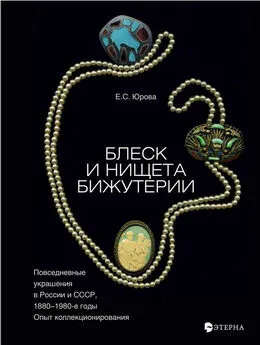


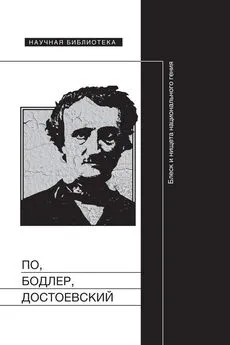
![Дарья Донцова - Блеск и нищета инстаграма [litres]](/books/1068651/darya-doncova-blesk-i-nicheta-instagrama-litres.webp)
